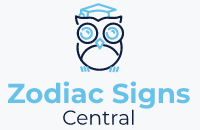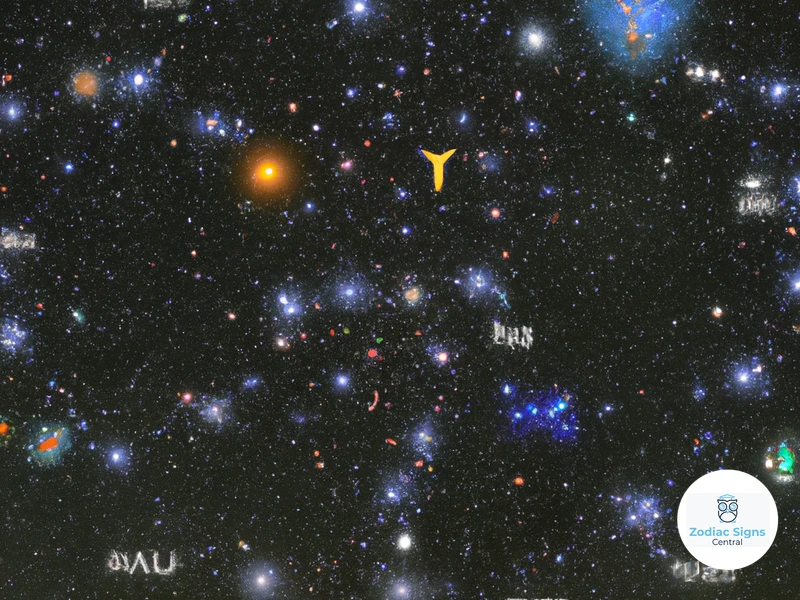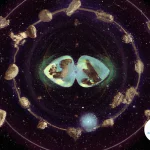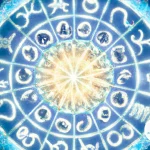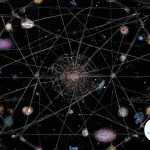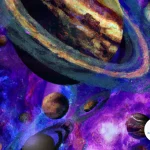Astrology, as a beloved field of study, has captivated humanity for centuries. With its complex system of celestial bodies and their interactions, astrology seeks to uncover the intricate web of human destiny and personality. One of the fundamental concepts within astrology is that of aspects, which are specific relationships formed between planets and other celestial points within a birth chart. These aspects add depth and nuance to an astrological interpretation, shedding light on various aspects of an individual’s life. In this article, we will delve into the different types of aspects found in astrology, exploring their meanings and how they influence our astrological understanding. So, let us embark on this celestial journey, unveiling the mysteries of the cosmic connections that shape our lives.
What are Aspects?
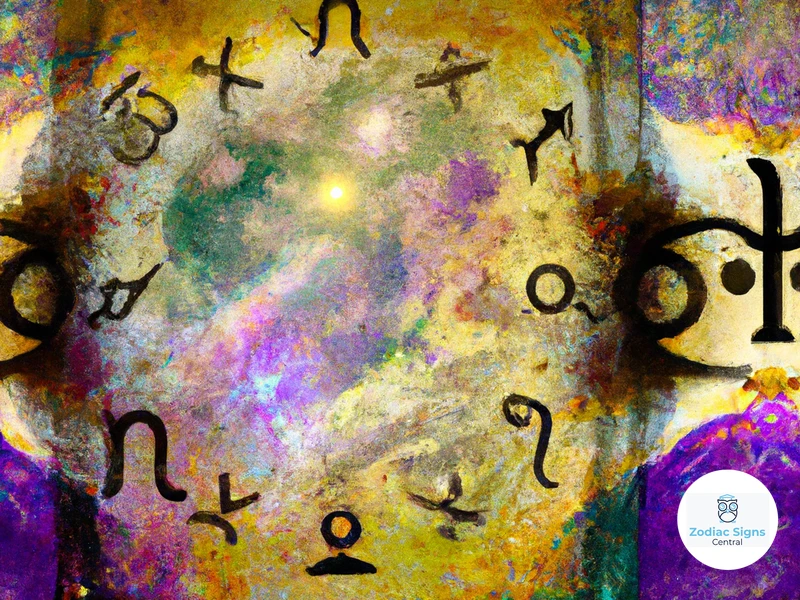
Aspects in astrology refer to the specific angular relationships formed between different celestial bodies within a birth chart. These relationships are measured in degrees and are classified into various types based on the specific angle created. Each aspect carries its own unique energy and influences the interpretation of the astrological chart. Understanding aspects is crucial in astrology as they provide insight into the dynamic interplay between planets and other astrological points.
Aspects can be seen as the threads that weave together the intricate tapestry of an individual’s life. They reveal the connections and tensions between different planetary energies, shaping a person’s personality traits, experiences, and life events. The angles formed by the aspects determine the intensity and quality of these relationships.
For example, a conjunction occurs when two planets are in close proximity to each other, usually within 10 degrees. This aspect signifies a strong blending of energies, often leading to intensified characteristics or events related to the planets involved.
On the other hand, an opposition occurs when two planets are approximately 180 degrees apart. This aspect represents a polarity or conflict between the energies of the planets. It can indicate a need for balancing opposing qualities, internal struggles, or external opposition in certain areas of life.
Other common aspects include the trine, which forms a harmonious angle of approximately 120 degrees, indicating ease and flow of energy between planets. The square, with an angle of approximately 90 degrees, represents tension and challenges that lead to growth and transformation. The sextile, at an angle of approximately 60 degrees, signals opportunities and growth through blending complementary energies.
Beyond these familiar aspects, there are several lesser-known ones that also contribute to the complexity of astrological interpretation. These include the quincunx, semi-sextile, semi-square, quintile, square-inconjunct, sesquiquadrate, opposition-inconjunct, yod, grand trine, T-square, grand cross, and stellium.
Each aspect brings its own unique flavor and influence to the overall astrological analysis. They provide depth and detail, uncovering layers of meaning within a birth chart. By understanding the different types of aspects and how they interact, astrologers can paint a more complete picture of an individual’s personality, strengths, challenges, and life experiences.
Exploring the aspects within a birth chart opens up a world of insight and understanding. It allows us to appreciate the intricate dance of celestial energies and how they shape our lives. So, as we delve deeper into the realm of astrology, let us now dive into the specific types of aspects and their significance in astrological interpretation.
Types of Aspects
The study of astrology encompasses a wide range of aspects, each one offering unique insights into the dynamic interplay between celestial bodies. These aspects serve as the building blocks of astrological interpretation, shaping our understanding of an individual’s birth chart. One of the most significant aspects is the conjunction, which occurs when two planets align closely, intensifying their energies and creating a powerful fusion. On the opposite end of the spectrum, we have the opposition, where two planets are approximately 180 degrees apart, representing a polarity or conflict that demands balance. The trine, with an angle of around 120 degrees, signifies harmony and flow, while the square, at approximately 90 degrees, presents challenges and opportunities for growth. The sextile, at an angle of 60 degrees, reveals supportive and complementary energies. Lesser-known aspects such as the quincunx, semi-sextile, semi-square, quintile, square-inconjunct, sesquiquadrate, opposition-inconjunct, yod, grand trine, T-square, grand cross, and stellium contribute to the intricate tapestry of astrological interpretation. Each aspect brings a unique flavor and complexity to the birth chart, shedding light on different facets of an individual’s life and personality. Whether examining the dynamic relationship dynamics between Gemini and Leo, exploring the connection between astrology and mental health, or seeking astrological insights into overcoming bad habits and improving health, understanding the various types of aspects is essential for a comprehensive astrological analysis.
1. Conjunction
The conjunction aspect in astrology occurs when two planets are in close proximity to each other, usually within 10 degrees. This aspect creates a powerful blending of energies between the planets involved, resulting in an amplification of their combined effects. When two planets are in conjunction, their qualities merge and interact, often creating a strong focus on the characteristics represented by those planets.
The conjunction aspect can manifest in various ways depending on the planets involved. It can intensify and strengthen the qualities of both planets, leading to heightened expression and potential. For example, a conjunction between the Sun and Mercury may enhance communication skills, intellectual pursuits, and self-expression. This aspect can indicate a person who is articulate, intelligent, and confident in their ideas.
Conjunctions can also highlight areas of life where individuals may experience internal conflicts or contradictions. When two planets with conflicting natures come into conjunction, there can be a struggle to reconcile their energies. For instance, a conjunction between Mars and Venus can create a tension between passion and harmony, leading to challenges in relationships or personal desires.
The specific interpretation of a conjunction aspect depends on the planets involved, the signs they are in, and the overall context of the birth chart. A conjunction between benefic planets (such as Venus and Jupiter) generally indicates harmonious and positive influences, while a conjunction between malefic planets (such as Mars and Saturn) may signify challenges and obstacles.
It’s important to analyze the house placement of the conjunction aspect as well, as this can provide further insight into the specific areas of life where the energies of the planets will be most prominent. For example, a conjunction between the Moon and Neptune in the 10th house may indicate a strong imaginative and intuitive connection to one’s career or public image.
The conjunction aspect is a potent configuration that brings together the energies of two planets, blending and amplifying their effects. It signifies a strong interplay between the qualities represented by the planets involved, influencing personality traits, life events, and areas of focus in an individual’s life. To explore further the impact of conjunctions in astrology, you can read about the dynamic relationship dynamics between Gemini and Leo here.
2. Opposition
The opposition aspect is one of the most well-known and significant aspects in astrology. It occurs when two planets are positioned approximately 180 degrees apart in the birth chart. This aspect represents a dynamic and polarizing relationship between the energies of the involved planets.
In an opposition, the planets involved are in direct opposition to each other, creating a tension that often manifests as a metaphorical tug-of-war. This aspect signifies a need to find balance and integration between two opposing forces or qualities in one’s life.
The opposition aspect highlights the duality inherent in human experience and can bring about both challenges and growth opportunities. It often presents itself in the form of external circumstances or relationships that mirror the internal tension within an individual.
For example, if an individual has an opposition between Venus and Mars, they may experience a conflict between their desires for harmonious relationships (Venus) and assertive action (Mars). This can create tension and challenges in finding a balance between their needs for both connection and independence.
The opposition aspect can also indicate a sense of projection, where one projects onto others the qualities or energies they disown within themselves. This can lead to a cycle of attracting people or situations that mirror the unacknowledged aspects of oneself, providing an opportunity for self-reflection and growth.
Navigating the opposition aspect requires developing awareness of the opposing forces at play and finding ways to integrate and balance them. This can be achieved through conscious self-reflection, embracing both sides of the opposition, and learning to find a middle ground.
In terms of interpretation, the specific planets involved in the opposition provide additional insights into the themes and areas of life that will be impacted. For example, an opposition involving the Moon and Saturn may bring forth challenges in balancing emotional needs (Moon) with responsibilities and boundaries (Saturn).
While the opposition aspect can present challenges, it also offers immense potential for personal development and transformation. It invites individuals to embrace the contrasting qualities within them, reconcile the opposing energies, and find a higher expression of harmony and unity.
Understanding the opposition aspect in a birth chart can provide valuable insights into an individual’s inner conflicts, relational dynamics, and the areas of life where balance and integration are needed. By acknowledging and working with the energies of the opposition, individuals can harness its transformative power to navigate life’s challenges and achieve personal growth.
As we delve deeper into the various aspects within astrology, let us now explore another intriguing aspect, the trine, and uncover its significance in astrological interpretation. [Link to: astro-insights-overcoming-bad-habits-health/]
3. Trine
The trine is an aspect in astrology that represents a harmonious and flowing relationship between two celestial bodies or points in a birth chart. It occurs when two planets are approximately 120 degrees apart, forming a triangle-like pattern. This aspect is considered highly beneficial and is believed to bring ease, cooperation, and natural talents to the areas of life influenced by the planets involved.
When two planets are in a trine aspect, their energies blend seamlessly, creating a sense of unity and synergy. This alignment creates a natural flow of energy, facilitating the expression of their combined influences. The trine aspect often signifies inherent abilities, gifts, and opportunities that come effortlessly to an individual.
In a natal chart, the trine aspect indicates areas of life where the individual tends to experience ease, harmony, and innate talents. It provides a favorable energy that supports personal growth, creativity, and positive experiences in those particular realms. For example, if the Sun and Jupiter are in a trine aspect, it may indicate an individual who possesses a natural optimism, abundance, and expansive worldview.
The trine aspect also promotes cooperation and positive interactions between different areas of life. It can indicate a smooth integration of various personality traits and life experiences, allowing individuals to navigate different aspects of their lives with grace and ease. This aspect encourages the blending of energies and the utilization of complementary qualities.
However, while the trine is generally regarded as a positive aspect, it can also have its drawbacks if taken for granted. The ease and comfort associated with the trine can sometimes lead to complacency or a lack of motivation to actively pursue growth and development. It is important for individuals with strong trine aspects in their birth chart to remain conscious of their potential and actively channel their talents and abilities toward meaningful goals.
The trine is an aspect in astrology that symbolizes harmony, ease, and natural talents. It represents a favorable and beneficial energy that promotes cooperation and integration in various areas of life. Understanding the trine aspect in a birth chart can provide valuable insights into an individual’s strengths, abilities, and potential for personal growth. By harnessing the positive qualities of the trine and remaining mindful of its potential pitfalls, individuals can make the most of this harmonious aspect and live a fulfilling and purposeful life.
For further exploration of astrology and its impact on mental health, you may find our article on Astrology and Mental Health insightful. This piece delves into the relationship between astrology and psychological well-being, offering valuable insights into the intersection of these fields.
4. Square
The square aspect is a dynamic and intense angle that occurs when two planets are approximately 90 degrees apart in the birth chart. It is symbolized by a square shape, representing the tension and challenges inherent in this aspect. The square aspect is known for its ability to stir up conflict, friction, and obstacles, but it also serves as a catalyst for growth and transformation.
When two planets form a square aspect, their energies clash and create a sense of internal tension within the individual. This can manifest as inner conflicts, struggles, and a feeling of being pulled in two different directions. The areas of life represented by the planets involved in the square become battlegrounds where challenges arise, urging the individual to confront and overcome obstacles.
The square aspect pushes individuals out of their comfort zones and stimulates personal growth. It often leads to significant internal and external changes, as it forces individuals to face their fears, make difficult decisions, and take action to resolve conflicts. While the square aspect can be disruptive and challenging, it also provides valuable opportunities for self-development and empowerment.
For example, a square aspect between Mars, the planet of action and assertiveness, and Saturn, the planet of discipline and restriction, can indicate a conflict between one’s desires for freedom and responsibility. This could manifest as a struggle to find a balance between taking risks and maintaining stability in one’s actions. However, navigating and integrating these conflicting energies can lead to the development of resilience, self-discipline, and the ability to overcome obstacles.
It is important to note that not all squares are negative or detrimental. The challenges presented by the square aspect can be seen as opportunities for growth and transformation. They provide valuable lessons and experiences that shape individuals and contribute to their personal evolution.
In astrology, the square aspect encourages individuals to confront their limitations, face their fears, and push through obstacles. It promotes resilience, determination, and the ability to take decisive action. By understanding the significance of the square aspect in a birth chart, astrologers can provide guidance on how to navigate and harness its energies effectively.
To learn more about overcoming obstacles and cultivating positive habits for better health, you can explore our article on astrology and overcoming bad habits for improved health. This resource can provide valuable insights on utilizing astrology to support personal growth in various aspects of life, including health and well-being.
5. Sextile
The sextile is a harmonious aspect in astrology that occurs when two planets are approximately 60 degrees apart. This aspect creates a supportive and flowing energy between the planets involved. It is often seen as a favorable aspect that brings opportunities, growth, and cooperation in the areas of life represented by the planets.
When two planets form a sextile, they complement each other, combining their energies in a smooth and effortless manner. This aspect encourages positive communication, collaboration, and synergy. It can enhance the expression of talents, creativity, and social interactions.
In a birth chart, the sextile aspect represents a natural affinity between the planets involved. It suggests that the energies of these planets can work together harmoniously, supporting each other’s goals and aspirations. Individuals with prominent sextile aspects in their charts may possess a natural ability to find and seize opportunities, as well as the ability to effortlessly blend different areas of their lives.
For example, a sextile between Venus, the planet of love and beauty, and Jupiter, the planet of expansion and abundance, can indicate a person who easily attracts positive relationships and experiences fortunate opportunities in the realm of love, creativity, and finances. The harmonious connection between these planets brings blessings and a sense of ease in these areas.
It is important to note that while the sextile is generally considered a beneficial aspect, it does require effort and action on the individual’s part to fully harness its potential. The supportive energy of the sextile provides opportunities, but it is up to the person to take advantage of them.
In terms of timing, the effects of a sextile aspect are not as intense or sudden as those of a conjunction or square. Instead, they unfold gradually, bringing subtle shifts and openings for growth. Sextiles often act as gentle nudges or invitations to explore new possibilities and expand one’s horizons.
To summarize, the sextile is a harmonious aspect in astrology that signifies opportunities, growth, and collaboration between two planets. It represents an affinity and ease of connection between the energies of the planets involved. Understanding the sextile aspect in a birth chart can provide valuable insights into how the individual can tap into their natural talents, navigate relationships, and embrace positive opportunities for personal and spiritual growth.
6. Quincunx
The quincunx, also known as the inconjunct, is a lesser-known aspect in astrology that brings a subtle, yet impactful, energy to a birth chart. It occurs when two planets are approximately 150 degrees apart, creating a dissonance and tension between their energies. This aspect is often associated with a sense of unease or imbalance, as the planets involved struggle to find common ground.
When a quincunx is present in a birth chart, it can manifest as a feeling of being at odds with oneself or experiencing a constant sense of adjustment and adaptation. The energies of the planets involved may not easily blend, creating a subtle internal conflict that can lead to a continuous sense of dissatisfaction or a feeling of never quite fitting in.
The quincunx challenges us to find creative solutions and make adjustments in order to integrate and harmonize the seemingly conflicting energies. It requires a level of flexibility and willingness to embrace change in order to find balance. This aspect can push individuals to explore new perspectives, innovate, and adapt to circumstances in their lives.
The houses and signs in which the planets are located play a crucial role in understanding the specific implications of a quincunx. The area of life represented by the house is where the tension and need for adjustment are likely to manifest. The signs involved indicate the qualities and characteristics contributing to this dynamic.
While the quincunx often presents challenges, it also offers an opportunity for growth and personal development. It invites individuals to reconcile the differences between the two planets involved, finding a way to utilize their energies in a complementary and harmonious manner.
For example, a quincunx between the Moon and Uranus may suggest a struggle between emotional security and the need for personal freedom. The individual may find it challenging to balance their desire for stability and their urge for independence. However, through conscious awareness and self-reflection, they can learn to embrace their unique emotional needs while allowing space for freedom and individuality.
The quincunx is an aspect in astrology that presents a subtle tension and the need for adjustment between two planets. It challenges individuals to find creative solutions and adaptability in integrating seemingly conflicting energies. Understanding the specific implications of the quincunx in relation to the houses and signs involved can provide valuable insights into an individual’s growth and self-discovery. Embracing and working with the dynamics of the quincunx can ultimately lead to a greater sense of wholeness and harmony within one’s life.
7. Semi-Sextile
The semi-sextile aspect, denoted by a 30-degree angle between two celestial bodies, presents a subtle but influential connection in astrology. This aspect occurs when two planets are placed one sign apart from each other. As the name suggests, the semi-sextile combines elements of both the conjunction and the sextile. It signifies a gentle interaction between the energies of the planets involved, providing a potential for collaboration and synergy.
The semi-sextile aspect acts as a bridge, facilitating communication and understanding between the planets. It encourages the blending of their respective energies, creating a harmonious link that can enhance the expression of their qualities. However, compared to the more pronounced sextile aspect, the semi-sextile may require more effort and conscious integration to fully manifest its influence.
In terms of interpretation, the semi-sextile signifies opportunities for growth and development. It suggests that the energies of the planets involved can support each other in subtle ways, contributing to personal evolution and self-improvement. While the effects of this aspect may not be as readily apparent as those of more prominent aspects, they can still have a notable impact on an individual’s life.
Astrologically, the semi-sextile fosters a sense of cooperation and connection between different areas of life. It encourages individuals to find common ground and to integrate seemingly disparate aspects of their personality or experiences. This aspect promotes adaptability and flexibility, urging individuals to explore the possibilities that arise from the interplay of different energies.
Individuals with strong semi-sextile aspects in their birth charts may possess an innate ability to bridge gaps and find connections between seemingly unrelated areas. They often have a knack for synthesizing diverse ideas or perspectives into a cohesive whole. This aspect can also indicate a need for balance and integration in specific areas of life, prompting individuals to seek harmony and collaboration.
The semi-sextile aspect in astrology represents a gentle but influential connection between two celestial bodies. It encourages synergy and cooperation, fostering growth and integration between different aspects of life. While more subtle in its effects compared to other aspects, the semi-sextile plays a valuable role in helping individuals find common ground and embrace the power of harmonious collaboration.
8. Semi-Square
The aspect known as the Semi-Square occurs when two planets are separated by an angle of 45 degrees. This aspect is considered to be a minor, challenging aspect that can bring friction and tension to the energies of the planets involved. The Semi-Square is believed to create a sense of restlessness and a need for constant adjustment and adaptation in the affected areas of a person’s life.
When two planets form a Semi-Square aspect, their energies clash and create a sense of unease. This aspect can create a push-pull dynamic, as the planets involved tug at each other in opposing directions. The conflicting energies may manifest as inner conflicts or external challenges, urging the individual to seek resolutions or find a balance between the planetary influences.
For example, if Venus (representing love and relationships) forms a Semi-Square aspect with Mars (representing assertiveness and passion), there may be a constant struggle to find harmony between the desire for emotional connection and the need for personal independence. This aspect may bring about moments of frustration or friction in intimate relationships, requiring conscious effort to find a middle ground.
In terms of its influence on an individual’s personality traits, a Semi-Square can indicate impatience, irritability, and a tendency to react impulsively. It may create a sense of urgency or pressure, pushing the individual to take immediate action or make hasty decisions. This aspect often requires the individual to develop patience, resilience, and adaptability in dealing with the challenges presented.
While the Semi-Square is considered a challenging aspect, it also offers opportunities for growth and learning. It prompts individuals to confront their inner conflicts, make necessary adjustments, and find creative solutions to the tensions they experience. By acknowledging and working with the energy of the Semi-Square, individuals can develop resilience, patience, and problem-solving skills.
It’s important to note that the effects of the Semi-Square aspect will be influenced by the specific planets involved, their placements, and the overall dynamics of the birth chart. Other aspects and planetary positions will modify the expression of this aspect, adding further layers of complexity and nuance to its interpretation.
Understanding the Semi-Square aspect and its influence in astrology can provide valuable insights into the challenges and growth opportunities present in an individual’s life. It reminds us that even amidst friction and tension, there is always the potential for personal growth, transformation, and the development of inner strength.
9. Quintile
The quintile is a lesser-known astrological aspect that carries an intriguing and unique energy. It occurs when two planets or astrological points are approximately 72 degrees apart. This aspect is considered harmonious and creative, as it brings together energies that have a natural affinity for each other.
In astrology, the quintile is often associated with talent, inspiration, and creative genius. It represents an opportunity for unique and innovative expression. Individuals with quintile aspects in their birth chart possess special gifts and abilities in specific areas of their lives.
The quintile encourages us to explore our inner realms, dive deep into our passions, and nurture our creative potential. It sparks a connection between seemingly unrelated areas of life, leading to insights, breakthroughs, and groundbreaking ideas.
When a quintile aspect is present in a birth chart, it signifies the potential for exceptional talents that may manifest in various forms. It can indicate artistic abilities, scientific brilliance, or the capacity for intuitive and visionary thinking.
However, it’s important to note that the quintile is not necessarily an indicator of success or fame. It simply suggests a natural affinity and inclination towards certain pursuits. Individuals with quintile aspects may need to actively engage with their talents, cultivate them, and put in dedicated effort to bring their unique gifts into fruition.
In terms of interpretation, the influence of the quintile aspect depends on the planets involved. For example, a quintile between Venus and Neptune may indicate a profound artistic sensibility or intuitive understanding of beauty. A quintile between Mercury and Uranus could suggest a rapid and inventive mind, leading to groundbreaking ideas or inventions.
Ultimately, the quintile aspect reminds us to embrace our innate creativity and explore the depths of our unique talents. It encourages us to tap into our passions, follow our inspirations, and allow our creative spark to shine brightly. By embracing the energy of the quintile, we can unlock our creative potential and make a distinctive impact in our chosen fields.
10. Square-Inconjunct
The Square-Inconjunct aspect, also known as the Quingûncio or the Semi-Sesquiquadrate, is a unique and lesser-known aspect in astrology. It combines the energies of the square and the inconjunct aspects, resulting in a complex and somewhat challenging dynamic between the planets involved.
The Square-Inconjunct aspect occurs when two planets are approximately 135 degrees apart, forming a quincunx aspect and a square aspect simultaneously. It combines the tension and conflict of the square with the sense of imbalance and adjustment required by the inconjunct.
This aspect signifies a struggle between two distinct areas of life represented by the planets involved. It creates a push-pull dynamic where the energies of the planets seem to clash, yet they also demand an adjustment to find harmony. This can lead to a sense of frustration and restlessness as individuals navigate the conflicting energies.
In terms of interpretation, the Square-Inconjunct aspect indicates the need for compromise and adaptation in order to find resolution and alleviation of the tensions. It suggests that there may be underlying issues or conflicts that require conscious effort and adjustments to address.
Individuals with a Square-Inconjunct aspect in their birth chart may encounter challenges in integrating the energies of the planets involved. There can be a sense of dissatisfaction or unease in the affected areas of life. However, this aspect also presents an opportunity for growth and transformation as it invites individuals to find innovative solutions and make necessary changes.
For example, a Square-Inconjunct aspect between Mars and Neptune may result in an internal struggle between assertiveness and dreaminess. The individual may find it difficult to assert themselves in a direct and straightforward manner, often vacillating between being overly passive or overly aggressive. Balancing the energies of Mars’ action-oriented nature and Neptune’s intuitive and imaginative qualities becomes essential for personal growth and achieving goals.
It is important to note that the Square-Inconjunct aspect can manifest differently depending on the signs and houses involved. The planetary energies may express themselves in unique ways within specific areas of life, adding further complexity and depth to the interpretation.
The Square-Inconjunct aspect brings together the challenging qualities of the square and the adjustment demands of the inconjunct. It highlights the need for compromise, adaptation, and finding innovative solutions to address conflicts between different areas of life represented by the planets involved. This aspect presents both challenges and opportunities for growth, inviting individuals to navigate conflicting energies and find harmony through conscious effort and adjustments.
11. Sesquiquadrate
The sesquiquadrate, also known as the square-and-a-half, is an aspect that occurs when two planets are around 135 degrees apart. This aspect combines elements of both the square and the inconjunct, creating a unique dynamic in astrological interpretation.
The sesquiquadrate represents a challenging and stressful energy, similar to the square aspect. It signifies a sense of tension, discord, and friction between the planets involved. This tension often manifests as inner conflict within an individual’s psyche or external challenges in their life circumstances.
When two planets form a sesquiquadrate, they create a sense of restlessness and unease. There is a sense of being caught in the middle, as the energies of the two planets clash and compete for dominance. This can lead to internal struggles as one tries to reconcile the conflicting demands and desires represented by the planets involved.
In terms of interpretation, the sesquiquadrate highlights areas of life where persistent obstacles and challenges may arise. It brings attention to areas where growth and transformation may be necessary, but also where resistance and frustration can occur. Individuals with prominent sesquiquadrate aspects in their birth charts often possess a strong drive to overcome adversity and find creative solutions to their problems.
To better illustrate the sesquiquadrate aspect, let’s consider an example. Imagine someone with a sesquiquadrate aspect between Mars and Neptune in their birth chart. Mars represents assertiveness, drive, and action, while Neptune represents dreams, illusions, and spirituality. With this aspect, the individual may struggle to find a balance between their desire for assertiveness and taking action (Mars) and their inclination towards idealism and spirituality (Neptune). They may find themselves torn between their passions and their deeper spiritual yearnings, leading to a constant push and pull within their psyche.
It’s important to note that the influence of the sesquiquadrate aspect is not always negative. While it presents challenges, it also provides opportunities for growth and learning. The friction generated by this aspect can lead to profound personal development, as individuals learn to navigate complexities and find innovative solutions to their problems.
The sesquiquadrate aspect is a complex and impactful aspect in astrology, blending elements of the square and inconjunct. It signifies tension, discord, and challenges, highlighting areas of life where growth and transformation are necessary. Understanding this aspect adds depth and nuance to astrological interpretations, providing insights into the dynamics of an individual’s personality and life experiences.
12. Opposition-Inconjunct
The opposition-inconjunct aspect, also known as the quincunx or the 150-degree angle, combines the energies of the opposition (180-degree angle) and the inconjunct (150-degree angle) aspects. This unique aspect creates a complex and challenging dynamic within a birth chart.
When two planets are in an opposition-inconjunct aspect, they are approximately 150 degrees apart from each other. This angle signifies a difficult and unfamiliar union of energies, as it combines the tension and polarity of the opposition with the adjustment and redirection of the inconjunct. This aspect often presents a sense of unease and imbalance, requiring adjustments and continuous effort to find harmony.
The opposition-inconjunct aspect brings together two energies that are inherently incompatible and difficult to reconcile. It signifies a clash or conflict between aspects of an individual’s personality or different areas of life represented by the planets involved. This can create inner tension and a sense of being torn between opposing desires or obligations.
For example, let’s say there is an opposition-inconjunct aspect between Venus, representing love and relationships, and Saturn, symbolizing responsibility and restriction. This aspect may manifest as a struggle to find balance between expressing affection and establishing boundaries or commitments. There can be a constant push and pull between the desire for closeness and the need for personal space or independence.
The opposition-inconjunct aspect encourages personal growth and change through the need for adjustment and adaptation. It requires a willingness to integrate seemingly opposing energies and find a middle ground. This aspect often prompts individuals to explore new perspectives and make conscious efforts to harmonize conflicting aspects of their lives.
Navigating the opposition-inconjunct aspect can be challenging, but it also offers opportunities for personal development and growth. It encourages individuals to embrace flexibility, compromise, and open-mindedness. By embracing the lessons and challenges presented by this aspect, individuals can cultivate resilience, adaptability, and a deeper understanding of themselves and others.
The opposition-inconjunct aspect combines the tension and polarity of the opposition with the need for adjustment and redirection of the inconjunct. This aspect signifies a complex interplay of energies, often resulting in inner conflict and the need for balance. By acknowledging and working with the demands of this aspect, individuals can embrace personal growth and development, finding ways to harmonize opposing forces and navigate the challenges of life.
13. Yod
The Yod, also known as the “Finger of Fate” or “Finger of God,” is a unique astrological aspect that adds an intriguing layer of complexity to a birth chart. It is formed when two planets are in a sextile aspect (60 degrees apart), and both of those planets form an inconjunct aspect (150 degrees) to a third planet. This creates a formation that resembles an isosceles triangle, with two planets at the base and the third planet at the apex.
The Yod is considered a highly significant aspect in astrology because it represents a focal point for intensified energy and a specific area of life where individuals may face challenges and experience unique opportunities for growth and transformation. The planet at the apex of the Yod becomes the focal point and plays a crucial role in the individual’s life.
Those who have a Yod in their birth chart are often seen as having a special life purpose or destiny. However, this purpose may come with its fair share of trials and difficulties. The Yod’s energy is often described as fated or karmic, indicating that the challenges and experiences associated with it may be part of a larger cosmic plan.
The Yod can manifest in various ways depending on the planets involved and the signs they occupy. Its energies can be both powerful and conflicting, requiring individuals to navigate complex dynamics within themselves and their external circumstances. Some may find that they are constantly pulled in different directions or faced with difficult choices, while others may experience a strong sense of purpose and direction.
The key to understanding and harnessing the energy of a Yod lies in recognizing the lessons it presents. Individuals with a Yod in their chart are encouraged to embrace the challenges and unique opportunities it brings, as they are often stepping stones towards personal growth and spiritual evolution. The Yod invites deep introspection, self-discovery, and the need to find balance and integration between the energies represented by the planets involved. It can propel individuals towards fulfilling their life purpose and finding their true path.
The Yod is a fascinating aspect that adds depth and complexity to astrological interpretations. Its presence in a birth chart signals unique potentials and challenges that shape an individual’s journey through life. By understanding the nature of the Yod and its significance, astrologers can provide valuable insights into an individual’s destiny, helping them navigate the intricate cosmic forces at play.
14. Grand Trine
The Grand Trine is a powerful and harmonious aspect in astrology, known for its positive and flowing energy. It occurs when three planets form an equilateral triangle in the birth chart, creating a grand triangle configuration. This aspect represents a natural talent or ease in the areas of life associated with the planets involved.
The Grand Trine is often seen as a favorable configuration, indicating potential strengths, gifts, and areas of natural expertise. It fosters a sense of harmony and ease in the expression of the energies involved. This aspect encourages the effortless flow of energy between the planets, allowing for the seamless integration of their qualities.
Individuals with a Grand Trine in their birth chart may exhibit exceptional abilities in the areas associated with the involved planets. For example, if the Grand Trine involves planets related to creativity and artistic expression, the individual may possess innate artistic talents, easily channeling their creativity in various forms.
The Grand Trine suggests a sense of stability and support in the corresponding areas of life. It often brings favorable circumstances, opportunities, and a general sense of ease and abundance. This aspect can lead to a heightened sense of self-confidence and optimism.
However, it is important to note that the Grand Trine can sometimes evoke a sense of complacency or laziness if one relies too heavily on the natural abilities or opportunities provided by this aspect. It is essential for individuals with a Grand Trine to cultivate a sense of proactive engagement and continuous growth to fully harness the potential of this configuration.
While the Grand Trine is generally regarded as a positive aspect, it is essential to consider its interaction with the overall chart. Sometimes, the excessive presence of harmonious aspects, such as the Grand Trine, can indicate an imbalance or a refusal to confront challenges. It is important to maintain a holistic approach when interpreting the birth chart and consider the dynamic interplay of all aspects and configurations.
The Grand Trine is a powerful aspect that brings harmonious and flowing energy to the birth chart. It symbolizes innate talents, effortless expression, and favorable circumstances in the areas associated with the planets involved. Individuals with a Grand Trine have the potential for exceptional abilities and a sense of stability in life. However, it is crucial to strike a balance between utilizing the natural talents provided by the Grand Trine and actively engaging with personal growth and development.
15. T-Square
A T-Square is an aspect in astrology that involves three planets or astrological points forming a challenging configuration. The name “T-Square” is derived from the shape it forms in a birth chart, resembling an uppercase letter “T.” This aspect represents a dynamic tension and conflict between the energies of the planets involved.
The T-Square consists of two planets in opposition, approximately 180 degrees apart, with a third planet or point forming a square aspect, approximately 90 degrees, to both of them. This geometric arrangement creates a sense of pressure, as the energies of the three planets are at odds with each other, resulting in tension, frustration, and the need for resolution.
T-Squares are often associated with internal struggles and external challenges that require conscious effort and active engagement to overcome. The conflicting energies represented by the planets involved can create a sense of restlessness and dissatisfaction in the specific areas of life governed by those planets.
However, the T-Square also presents an opportunity for growth and transformation. The challenges it brings forth push individuals to confront their limitations and find creative solutions to achieve balance and harmony. It encourages self-awareness, personal development, and the integration of conflicting energies.
The key to working with a T-Square is to recognize the lessons and opportunities it presents. Rather than succumbing to the tensions and frustrations, individuals with a T-Square must learn to harness the energy and channel it constructively. This can involve finding ways to balance the opposing qualities, seeking compromise, and utilizing the strengths of each planet involved.
Although the T-Square can be demanding and challenging, it can also lead to immense personal growth and achievement. Those who navigate its complexities with resilience and determination often emerge with a heightened understanding of themselves and the world around them.
It is important to remember that the interpretation of a T-Square is not solely determined by the planets involved, but also by the signs and houses in which they are located. This further adds nuances and specifics to how the T-Square manifests in an individual’s life.
The T-Square aspect is a powerful configuration in astrology that signifies tension, conflict, and growth. It challenges individuals to confront their limitations and find creative ways to integrate conflicting energies. While it may present obstacles, it also holds the potential for self-discovery and transformation. Understanding the T-Square within a birth chart can provide valuable insights into the challenges and opportunities an individual may encounter in their life journey.
16. Grand Cross
The Grand Cross is a powerful and challenging aspect in astrology, represented by four planets or points forming a square and opposing each other, creating a cross-like pattern within a birth chart. This aspect brings together intense energies and conflicting forces, resulting in a dynamic and often stressful configuration.
When the Grand Cross is present in a chart, it signifies a strong inner tension and a need for resolution. The planets involved in the Grand Cross typically represent different areas of life, and their oppositions and squares create a complex interplay of energies. This can manifest as a constant push and pull between various aspects of an individual’s personality and circumstances.
The Grand Cross is known for generating a sense of frustration and challenges, as it represents a continuous struggle to find harmony and balance. However, despite the difficulties it poses, this aspect also presents opportunities for growth and transformation.
Individuals with a Grand Cross in their birth chart often possess great inner strength and resilience. They are motivated by the need to overcome obstacles and achieve personal growth. The tension generated by the cross can propel them to develop coping mechanisms and find creative solutions to their challenges.
The areas of life represented by the planets involved in the Grand Cross are particularly significant. Each planet carries its own meaning and energy, and its placement within the cross adds another layer of complexity. Understanding the specific planetary energies at play can provide valuable insights into the areas of life where the individual may face the greatest struggles and where their greatest potential lies.
While the Grand Cross can present difficulties, it also offers a unique opportunity for personal development and transformation. It challenges individuals to confront their fears, face their limitations, and find ways to integrate and balance the conflicting energies within themselves. It encourages growth, resilience, and self-awareness.
It’s important to note that the presence of a Grand Cross in a birth chart does not necessarily mean a life filled with constant struggle. The way an individual experiences and navigates this aspect depends on their personal awareness, choices, and the support systems they have in place.
The Grand Cross is a complex and powerful aspect in astrology. It symbolizes the tension and challenges that individuals face in different areas of their lives. While it can be a source of stress, it also provides opportunities for growth, resilience, and transformation. Understanding and working with the energies of the Grand Cross can ultimately lead to a deeper understanding of oneself and the ability to navigate life’s challenges with greater wisdom and strength.
17. Stellium
A Stellium is a unique and powerful aspect in astrology that occurs when three or more planets are closely conjunct in the same sign or house within a birth chart. This alignment creates a concentrated energy that amplifies the influence of these planets on the individual’s life. A Stellium is like a celestial gathering, where the combined energies of multiple planets work together in a synergistic way, shaping the person’s personality traits and life experiences.
When a Stellium is present in a birth chart, it indicates a strong emphasis on the qualities and themes associated with the sign or house in which it occurs. The energies of the planets involved blend together, creating a dominant force that influences various aspects of the individual’s life. This concentrated energy can manifest in both positive and challenging ways, depending on the specific planets and their aspects within the Stellium.
Individuals with a Stellium often have an intense drive and focus in the areas represented by the sign or house involved. They may possess exceptional talents, heightened emotional sensitivity, and a deep sense of purpose related to the Stellium’s themes. The Stellium may also bring about significant life events or challenges that push the person towards growth and transformation in those areas.
For example, a Stellium in the sign of Gemini may indicate that the individual has a strong emphasis on communication, learning, and intellectual pursuits. They may possess exceptional communication skills, a curious and adaptable nature, and a need for intellectual stimulation. This Stellium could manifest in a career as a writer, teacher, or public speaker, where the individual’s ability to express themselves and share information is heightened.
A Stellium in the seventh house, which is associated with partnerships and relationships, may indicate a strong focus on developing intimate connections and a deep desire for harmonious partnerships. Individuals with this placement may experience intense and transformative relationships throughout their lives, and may even find themselves drawn to fields such as counseling or psychology, where they can explore the dynamics of human connections.
It is important to note that a Stellium can create an intensity and concentration of energy that may sometimes feel overwhelming for the individual. Balancing the energies and finding healthy outlets for expression becomes crucial in order to navigate the challenges and harness the potential of the Stellium.
A Stellium is a potent aspect that brings together the energies of multiple planets in a concentrated area of a birth chart. It creates a powerful influence that shapes the individual’s personality and life experiences, emphasizing the themes and qualities associated with the sign or house involved. By understanding the significance of a Stellium in an astrological chart, one can gain deeper insights into the person’s strengths, challenges, and life path.
How Aspects Influence Astrological Interpretation
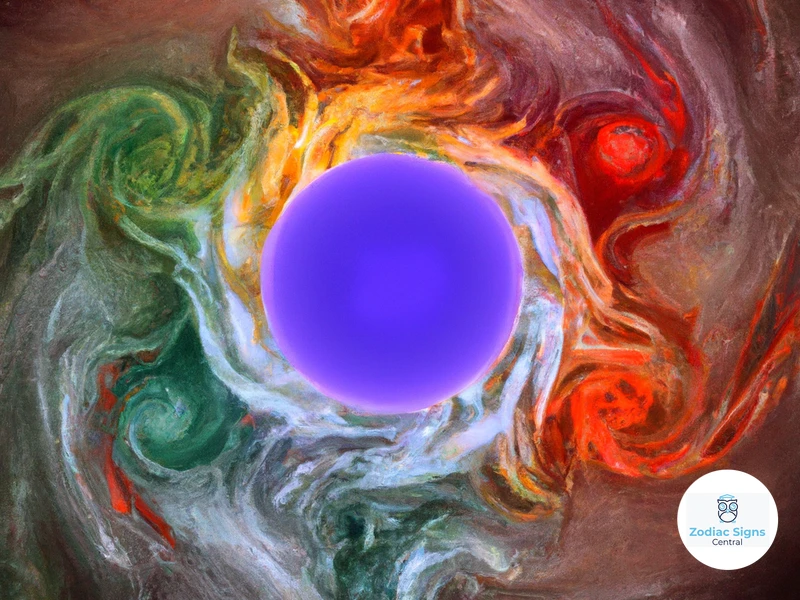
Aspects play a crucial role in astrological interpretation as they greatly influence the overall dynamics and nuances within a birth chart. These celestial connections between planets and other astrological points provide a framework for understanding how different energies interact and manifest in an individual’s life.
Firstly, aspects reveal the strengths and challenges that individuals may face in various areas of their life. For example, a harmonious trine between Venus and Jupiter may indicate a natural talent for attracting abundance and experiencing expansive love and joy in relationships. Conversely, a challenging square between Mars and Saturn could signify a struggle with assertiveness and frustration in achieving goals.
Aspects also shed light on the overall balance of energies within a chart. A well-balanced chart will have a mix of challenging aspects that promote growth and development, along with harmonious aspects that bring ease and support. This balance is crucial in understanding how individuals navigate different life experiences and make use of their inherent strengths.
Aspects provide a contextual framework for interpreting the planets involved. For instance, a conjunction between the Sun and Mercury can intensify communication skills, indicating a person who is articulate and expressive. On the other hand, a tense opposition between Mars and Pluto may suggest a constant battle between personal will and the need for transformation.
Aspects can also influence the timing of events and the overall timing of a person’s life. Certain aspects, such as the transiting conjunction of Saturn to a natal planet, can indicate significant shifts and milestones. However, it’s important to consider the overall chart configuration and the individual’s unique planetary placements to accurately interpret the timing influence of aspects.
Additionally, aspects can reveal patterns and themes within a person’s life. For example, the presence of multiple conjunctions or oppositions can suggest a need for integration and balance in specific areas. Patterns like the grand trine or T-square can highlight inherent strengths or challenges that shape an individual’s path and experiences.
Aspects hold immense power in astrological interpretation. They provide a complex tapestry of energies and dynamics within a birth chart. By carefully analyzing the different types of aspects, their angles, and the planets involved, astrologers can gain valuable insights into an individual’s personality, strengths, challenges, and life events. Understanding the influence of aspects is essential for unraveling the intricate web of celestial energies and unlocking the secrets of an individual’s astrological blueprint. So, let us continue our exploration of astrology’s fascinating aspects and their profound impact on interpretation.
Conclusion
In conclusion, aspects play a vital role in astrology, providing valuable insights into the dynamics between celestial bodies within a birth chart. By understanding the different types of aspects and their meanings, astrologers can unravel the complexities of an individual’s personality, experiences, and life events.
The various aspects, such as conjunctions, oppositions, trines, squares, sextiles, and more, each bring their own unique energy and influence to the interpretation of a birth chart. They provide valuable information about how different planetary energies interact, creating a complex web of connections and tensions.
Astrologers can use aspects to gain a deeper understanding of personality traits, strengths, challenges, and potential life events. For example, a conjunction could indicate a strong emphasis on certain qualities or themes, while an opposition may signify internal conflicts or external opposition in different areas of life.
By exploring the lesser-known aspects, such as the quincunx, semi-sextile, quintile, or yod, astrologers can uncover hidden nuances and subtleties within a birth chart that may not be immediately apparent.
Overall, aspects enrich astrological interpretation, adding depth, complexity, and specificity to the understanding of an individual’s astrological makeup. They offer clues and insights into the interconnectedness of different planetary energies and how they shape our lives.
As astrology continues to captivate and intrigue, delving into the realm of aspects allows us to appreciate the intricate and profound connections between the celestial and the personal. It reminds us that we are all part of a vast cosmic dance, and by understanding the aspects within our birth chart, we gain a deeper understanding of ourselves and our place in the universe.
So, whether you are exploring the intensity of a conjunction, the tension of a square, or the harmony of a trine, may your astrological journey be rich with the profound insights that aspects provide.
Frequently Asked Questions

1. What is the significance of aspects in astrology?
Aspects in astrology play a vital role in understanding the dynamic relationships between celestial bodies within a birth chart. They provide insight into the interplay of energies and influences that shape an individual’s personality traits, experiences, and life events.
2. How are aspects measured in astrology?
Aspects in astrology are measured in degrees, representing the angular relationships between planets and other astrological points. The specific angles formed determine the intensity and quality of these relationships.
3. What is the difference between a trine and a square aspect?
A trine aspect is approximately 120 degrees and signifies harmonious energy and ease between planets. In contrast, a square aspect is approximately 90 degrees and represents tension and challenges that lead to growth and transformation.
4. Can aspects indicate specific events or experiences in a person’s life?
While aspects provide valuable insights into an individual’s life, it is important to remember that astrology is a tool for understanding and not predicting specific events. Aspects offer a more nuanced understanding of the energies at play, allowing for a deeper exploration of possibilities.
5. What is the significance of the conjunction aspect?
A conjunction occurs when two planets are in close proximity, usually within 10 degrees. This aspect signifies a strong blending of energies, often leading to intensified characteristics or events related to the planets involved.
6. How are opposition aspects interpreted in astrology?
An opposition aspect occurs when two planets are approximately 180 degrees apart. It represents a polarity or conflict between energies and can indicate a need for balancing opposing qualities, internal struggles, or external opposition in certain areas of life.
7. Are all aspects equally influential in astrological interpretations?
Not all aspects carry the same level of influence. The potency of an aspect depends on various factors such as the closeness of the angle and the planets involved. Major aspects like the conjunction, square, and opposition tend to have more significant impact on the astrological interpretation.
8. What is the concept of a stellium in astrology?
A stellium refers to a cluster of three or more planets in the same sign or house within a birth chart. This concentration of energy creates a potent focal point in an individual’s life, indicating areas of intense focus, talent, or challenges.
9. Can aspects change or shift in influence over time?
Aspects within a birth chart retain their initial influence throughout a person’s life. However, transiting aspects, which occur as planets move through the current sky, can create temporary influences that intersect with the natal aspects, shaping specific periods and themes in an individual’s life.
10. How can understanding aspects enhance self-awareness and personal growth?
By understanding aspects within a birth chart, individuals gain insights into their strengths, challenges, and potential growth areas. This self-awareness allows for a deeper understanding of one’s own tendencies and experiences, empowering personal growth and transformation.
References
Frequently Asked Questions

1. What is the significance of aspects in astrology?
Aspects in astrology are important connections between planets in a birth chart, which influence the energies and dynamics between them.
2. How do aspects affect astrological interpretation?
Aspects play a crucial role in shaping the overall interpretation of a birth chart, as they provide insights into the strengths, challenges, and potential outcomes of planetary interactions.
3. Can you explain the concept of conjunction in astrology?
In astrology, conjunction occurs when two or more planets are closely positioned together in the same zodiac sign. This aspect intensifies the energy of the involved planets, creating a powerful union of their qualities.
4. What is the significance of opposition in astrology?
Opposition represents a polarizing aspect where two planets are directly across from each other in the birth chart. It often indicates a dynamic tension or conflict, requiring balance and integration between the opposing energies.
5. How does trine aspect influence astrological charts?
Trine aspect creates a harmonious connection between planets, usually occurring when they are 120 degrees apart in the birth chart. It symbolizes ease, flow, and positive cooperation between the involved planets.
6. What does the square aspect indicate in astrology?
The square aspect occurs when planets are 90 degrees apart in the birth chart, forming a challenging and dynamic relationship. It represents tension, conflict, and the need for growth and transformation.
7. Can you explain the meaning of the sextile aspect in astrology?
Sextile aspect occurs when planets are 60 degrees apart in the birth chart. It signifies opportunities, creativity, and easy communication between the involved planets.
8. What is the significance of the quincunx aspect in astrological interpretation?
The quincunx aspect, also known as the inconjunct aspect, represents a 150-degree angle between planets in the birth chart. It indicates a need for adjustment, adaptation, and the integration of seemingly different energies.
9. How does the quintile aspect influence astrological dynamics?
The quintile aspect occurs when planets are approximately 72 degrees apart in the birth chart. It symbolizes unique talents, creative potential, and opportunities for personal growth and self-expression.
10. Can you explain the concept of stellium in astrology?
A stellium occurs when three or more planets are closely positioned together in the same zodiac sign or house in the birth chart. It amplifies the energy of the involved planets, indicating a strong focus and emphasis on the qualities associated with that sign or house.
References
- The Aspects
- The Meaning of Aspects in Astrology
- Planetary Aspects (or Angles) In Astrology, Explained
